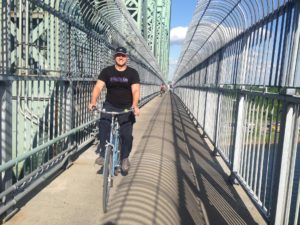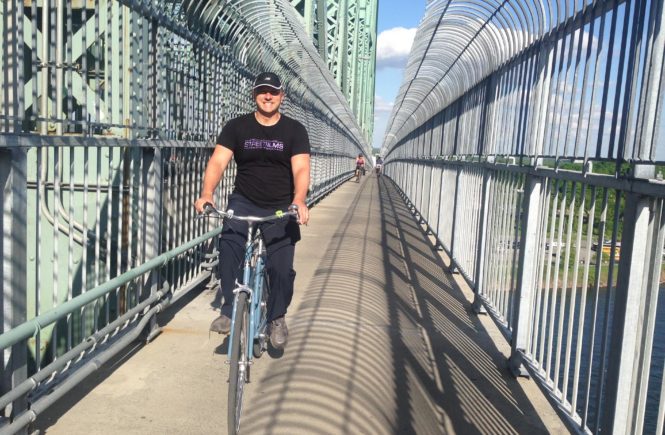 Clarence Eckerson has spent more than a decade documenting complete street best practices all over the world with Streetfilms. Produced by OpenPlans, a 501c3 non-profit organization, Streetfilms produces educational videos about sustainable mobility and interviews the policy makers, planners, and engineers responsible for creating these projects. Clarence is also an avid cyclist and answered a few questions about how to build more sustainable streets in American cities. An expanded version of this interview will appear in my upcoming book, “Human Speed”.
Clarence Eckerson has spent more than a decade documenting complete street best practices all over the world with Streetfilms. Produced by OpenPlans, a 501c3 non-profit organization, Streetfilms produces educational videos about sustainable mobility and interviews the policy makers, planners, and engineers responsible for creating these projects. Clarence is also an avid cyclist and answered a few questions about how to build more sustainable streets in American cities. An expanded version of this interview will appear in my upcoming book, “Human Speed”.
As a frequent cyclist and pedestrian, what do you think are the most dangerous street design issues facing pedestrians and cyclists on American streets?
I firmly believe that Leading Pedestrian Intervals should be standard just about everywhere. LPIs help give both pedestrians and cyclists a head start (well not legally for cyclists) and they have been popping up in my neighborhood of Jackson Heights by the dozens. They really allow you to counteract that right hook or a car driver launching their vehicle ahead and trying to cut off a pedestrian.
I start with that because the most dangerous street design component outside city centers are the wide rounded curbs at intersections that allow drivers to not even take their foot of the gas to make a turn. In many of the best cities you won’t see much of this, but I was recently in Los Angeles and could not believe how common they are. Even when you have the light as a pedestrian you have no guarantee anyone will stop and wait. You feel naked crossing the street. Like you have zero defense. The roadways are very dangerous. It is no wonder so many drive everywhere in L.A.
What is one important thing American cities can learn about complete streets and traffic safety from their European counterparts?
In most of Europe, in nearly every city, every project that removes car capacity, opens up public spaces or re-distributes streets more equitably among bikes, pedestrians and transit users is a success. It leads to citizens wanting more of these types of projects and the momentum continues. I can’t think of one project yet that was deemed a failure that reverted back to an automobile-only design (there must be, but they must be rare).
Many European cities are tackling parking with vigor. In Zurich, they have held the number of parking spaces static since 1996. Every year Copenhagen takes away a small percentage of parking out of their downtown. In Oslo they are removing large chunks of parking in their downtown and replacing them with much-needed bike lanes.
Automobile parking is essentially the biggest enemy to complete streets and better cities. The less parking you have, the better your city.




